Try the new IKO website at https://beta.ikointl.com/
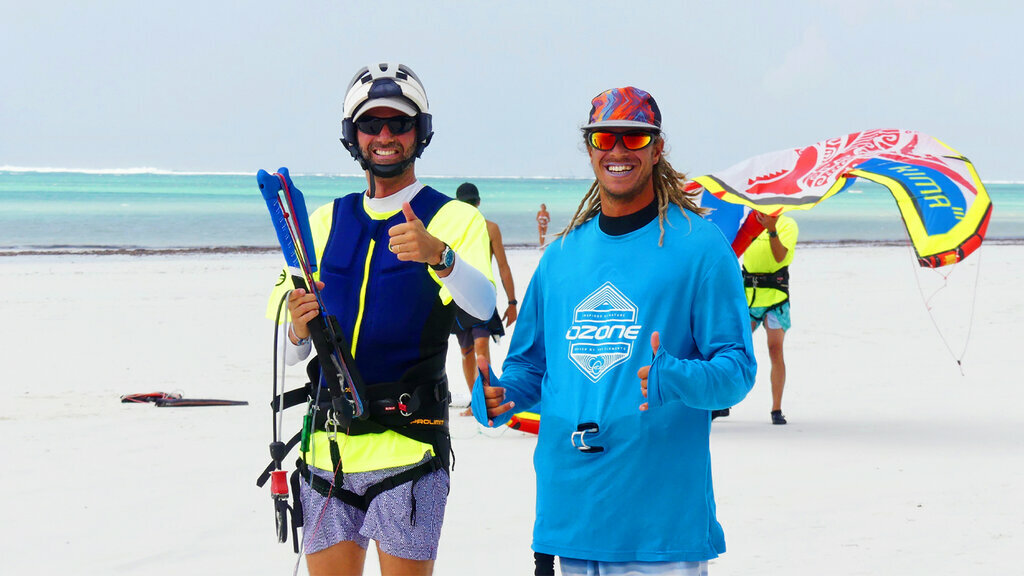
All the ins and outs of IKO Safety Standards and why you should follow them
Safety is an important issue in kiteboarding which has been labeled as a dangerous sport. At IKO we strive to provide people with the safest kiteboarding lessons possible using several different methods and equipment. Our Training Department works together with our team of Training Masters* and Examiners to continuously evolve and improve the methods and equipment used.
This interview was conducted with Vincent, who is not only the Head of the IKO Training Department, but also The Training Master who trains other Training Masters! Getting to this position took 20 years of kite experience, around 15 years of being an Instructor and of these 15 years, he has been an Examiner for 8 years. In other words, a tremendous amount of experience and dedication to the sport! This interview will give you all the ins and outs as to why we have set these rules and should be followed by ANY kitesurfing Instructor!
*A Training Master can train Examiners
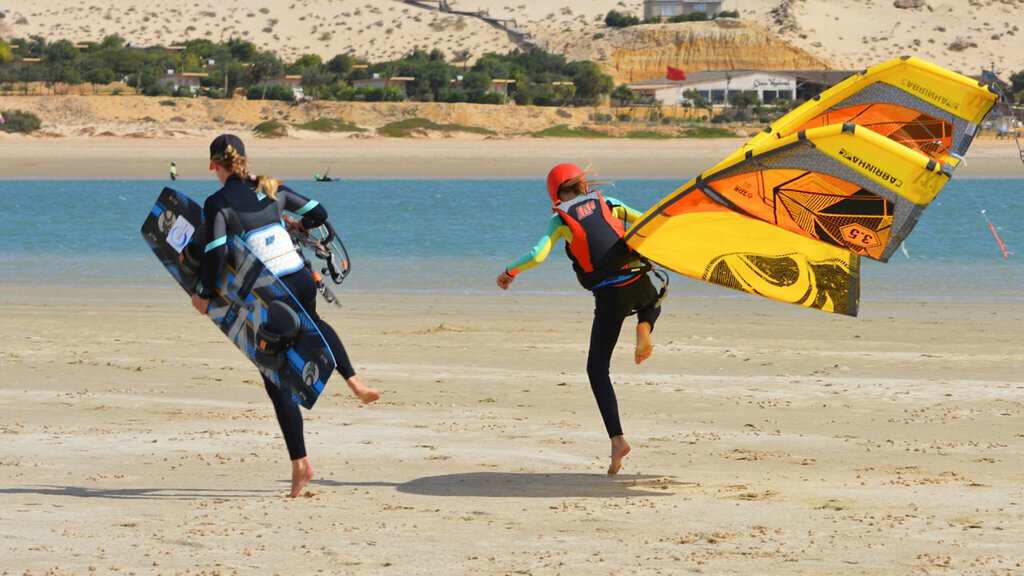
Photo Credit: White Dune Kiting
We require students to be able to swim before they start their kitesurfing lessons, so why do they have to wear a life jacket?
Because kitesurfing is a water-sport where we can go into deep water, you have to be able to swim. However, very few people are able to swim back from a reef that’s 1km out from the shore without problems even if they are in good shape. This is when a life-jacket is very useful.
Students crash occasionally, and in extreme cases, they can get a head injury that causes them to lose consciousness in the water. The life jacket then saves them from drowning.
It’s also highly recommended that students wear an impact vest on land, but this isn’t mandatory, especially if it’s very warm. This provides an extra layer of protection for the chest. It’s also useful to wear the life-jacket on land because thanks to using short lines, a student progresses faster into the discovery level and they’re likely to go into the water in the first lesson. If they don’t have the life-jacket on already and the school is a short walk away, you have to walk and lose valuable time. If the life-jacket is already on, then you can move into the water right away which will make the student happy.
All in all, there’s no downside to wearing a life jacket. It might be a little bit annoying but students must wear a life jacket during their lesson. Always make sure that you have life-jackets for people of all shapes and sizes to ensure that it fits well.
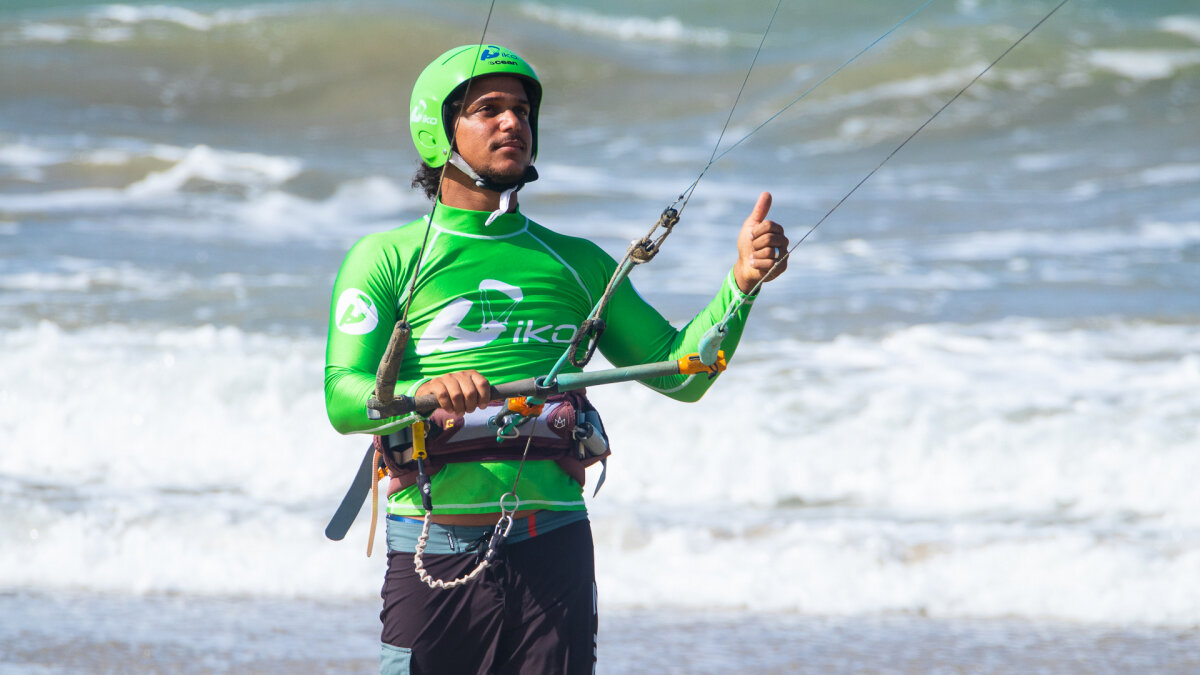
Who must wear a helmet and when should it be worn? Why aren’t helmets mandatory for instructors who are teaching a course or independent riders?
All students at all levels must wear a helmet during their lessons, whether they’re on the beach or in the water. This includes beginner kiters taking a discovery lesson, advanced kiters learning handle passes and candidates taking pro courses.
If a student isn’t wearing a helmet and suffers a head injury during a lesson, the instructor may be found liable if legal action is taken against them. In the end, it’s the responsibility of instructors to keep students safe.
There is no obligation for certified instructors to wear helmets because this is their responsibility, there’s a huge difference between ‘I’m working and I will take the risk of a head injury’ compared ‘I am giving a lesson to someone who doesn’t know the sport and I’m taking the risk of giving my student a head injury because the student didn’t receive a helmet.’
Sometimes people say it’s annoying, yes, it’s a bit annoying. Sometimes people say I don’t want to wear a helmet, but they don’t have a choice because in the end they fall under the responsibility of the instructor and they have to listen to you.
If you see people teaching here on the beach without helmets, do you ever say anything about it?
I try to communicate with them but if they are not IKO then they usually don’t care about IKO and the rules we have set. Of course, I try to explain and talk to them but the people who are most blind are the people who don’t want to see.
We always try and we do see more and more non-IKO Instructors teaching with helmets and life-jackets but there will always be those people that simply don’t care. The IKO is not the police so we cannot regulate this worldwide.
This is also why we are working on becoming more recognized worldwide. For example, we just started working together with the Italian organization that regulates water sports. We hope to start working together with other countries as well so the sport can develop more safely and not have the image that it is a dangerous sport to learn.
Why should my safety leash be attached to the front of the harness?
First of all, the kite will pull you in the direction that it is going from the attachment point. If the leash is attached on the back then it will pull you on your back and you will struggle to release it. However, put it on the front and you will be able to reach it better and thus release it quicker.
Let’s make a comparison to an F-16 or other military aircrafts, in extreme dangerous situations the pilot needs to eject himself from the plane. The button to eject the pilot is between his knees right in front of him where it is easy to reach. If you tell one of these pilots that we put our eject button on our back, they will say that this is stupid because it is more difficult to reach and you could lose some valuable time that could mean the difference between life and death.
Even if you are at the level where you are doing handle-passes, putting the leash on the back of the harness is not an excuse that makes the trick easier to perform. The leash won’t block you or act any differently than when it is attached to the back. But if you happen to run into a problem, you’ll be very happy to be able to release it as quickly as possible.
Luckily, we don’t need to use our safety leash often and really big accidents are relatively rare in the kiteboarding scene, however, the day you do need it and you can’t reach it… Then you’re being dragged through the water on your back, you’re taking in water, you start to panic and the situation gets bad really fast.
Now, some people are putting the leash on the side of the harness, this already makes it more reachable however it’s still not the best option. A situation in which this wouldn’t be the optimal place to have the leash would be when you seriously injure one of your hands/arms/shoulders. Say you injure the arm on the side where you have your leash, this could mean that you are unable to reach your leash with that hand so you need to go around with your other hand to release the leash. This is more time-consuming and a more difficult manoeuvre, again it is possible but will be hard. We need to take all these situations into account because you don’t know when you will need to release your leash.
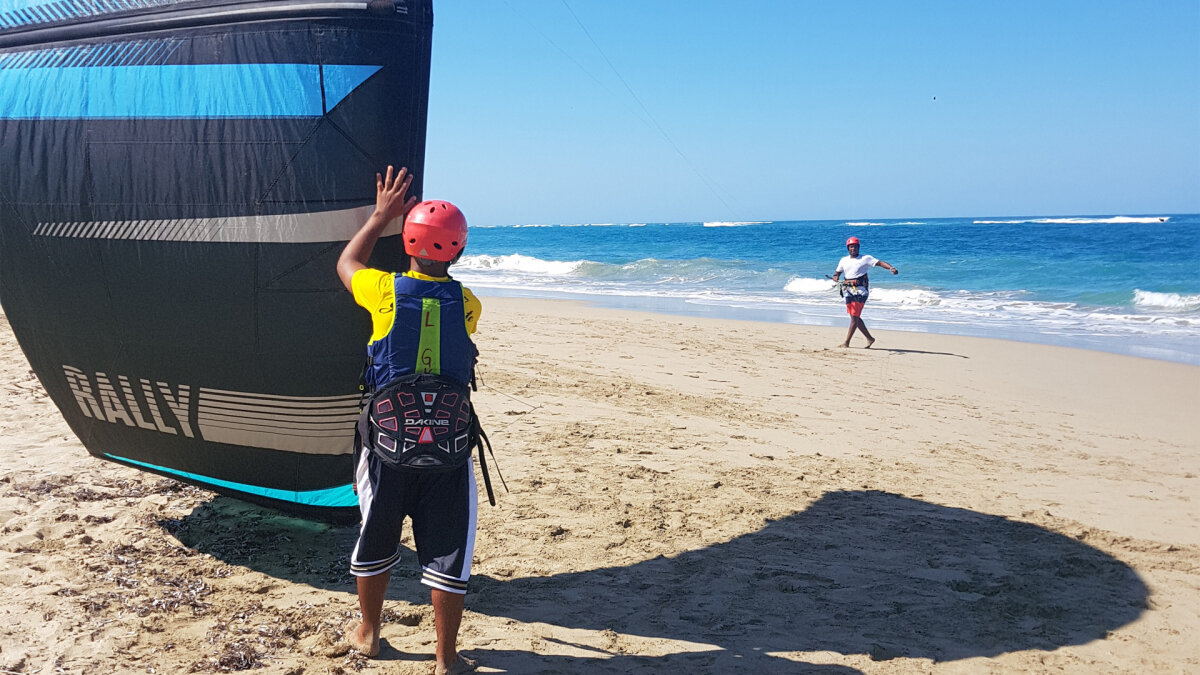
Why is the use of long-lines not recommended?
We are probably the only sport where the students are put on equipment that is meant for independent riders. When you learn how to ski/snowboard, you first start on the green slope and then progress as you gain more experience.
I always take the example of the car. When you are learning to drive you usually use a smaller car that doesn’t have as much power and not a formula one car. This makes sense as you first need to learn to steer the car and be able to stop the car. We do the same with short lines, if you start learning with a formula one then you have too much power from the start and you don’t know how to handle anything. So short lines will help you to do that, the steering is the same, you learn how to use the safety systems and to let go of the bar.
Of course, as soon as the student is able to do this comfortably, we give him the ‘formula one’ and we tell them, basically everything is the same however now you have more power so be careful. The student will understand you, at the beginning the student may not understand because they do not know anything about it. We first want to focus on steering and safety system use and only then give them access to some power.
When using long lines from the start, the student doesn’t know much about kiting yet so you will see them being pulled by the kite or the kite crashing hard, this makes them afraid. When you are afraid, you tend to be more tense which results in the student pulling more on the bar which will in turn create more power and then it’s just downhill from there.
Of course it works, you can learn how to kite on long lines with full power, we all did this a long time ago but on the other hand, using short lines has multiple advantages which are discussed in the next paragraph.
More and more instructors and kite schools are using short lines, what are the benefits for the Instructor and the student?
The first and most important advantage is that the kite’s power is reduced without reducing the size!
When learning on a kite that doesn’t have much power, the stress for both the Instructor and the student is reduced as no one is being pulled around by the kite. This in turn stimulates discovery as they can comfortably explore all areas of the wind window. Additionally, the kite will not crash as hard as it would on long lines which means the kites will need less maintenance and will last longer.
As the student can gradually get used to the power, they will have a better understanding of the power that a kite can have. If the student makes a mistake then this will have less negative impact on the student as the kite won’t have enough power to cause any serious incidents.
Due to the short lines, the size of the wind window is reduced, this means that we need less space for a lesson and as we use less space, we have less negative impact on other beach users. It also means that more lessons can be taught on land at the same time if the spot allows for it.
Less kites will be needed for the lesson, rather than changing the size of the kite, you can adjust the length of the lines. This isn’t only easier to do but also faster meaning the lesson time can be used optimally. A gradual transition to longer lines should be made once the student has demonstrated good kite control.
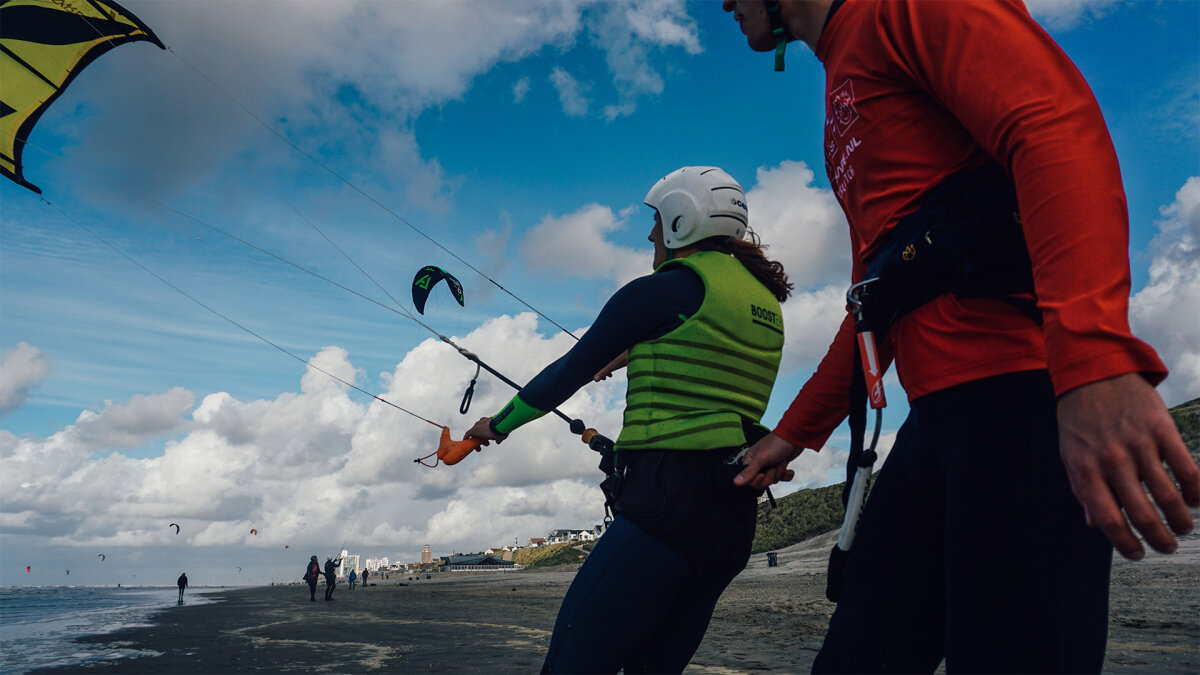
Photo Credit: Eva Krul
Why should you not hold onto the back of the student’s harness?
It is not forbidden to hold onto the back of the harness but if you’re holding on during the whole lesson, then it is likely that you don’t have confidence in your student. This may be because the lines are too long or because the student is not confident in steering the kite.
You know that therefore the student is in potential danger and you hold onto the harness.
Of course if there is some actual danger or high risk, you can hold onto the student’s harness to ensure the student’s safety. But if you are on trainer lines then the student is less likely to be pulled so it’s not necessary to hold onto the harness.
It’s much better not to hold onto the harness because without holding onto the harness they really learn and become more independent from the start. If you’re teaching and holding onto the back continuously then the student doesn’t get the actual feeling because they have an ‘anchor’ hanging off their back which isn’t the case when you go kiting independently.
It also helps you as an instructor! It will prepare you to teach at a higher level, when you are a Level 2 Instructor you can teach with 2 kites flying at the same time and it’s not possible to hold onto the student’s harness as you cannot be in 2 places at the same time.
I barely touch the student’s harness during my lessons, maybe just a little bit in the beginning or if it is a little kid or someone who is a little bit afraid just to reassure them. But less than 10% of the time.
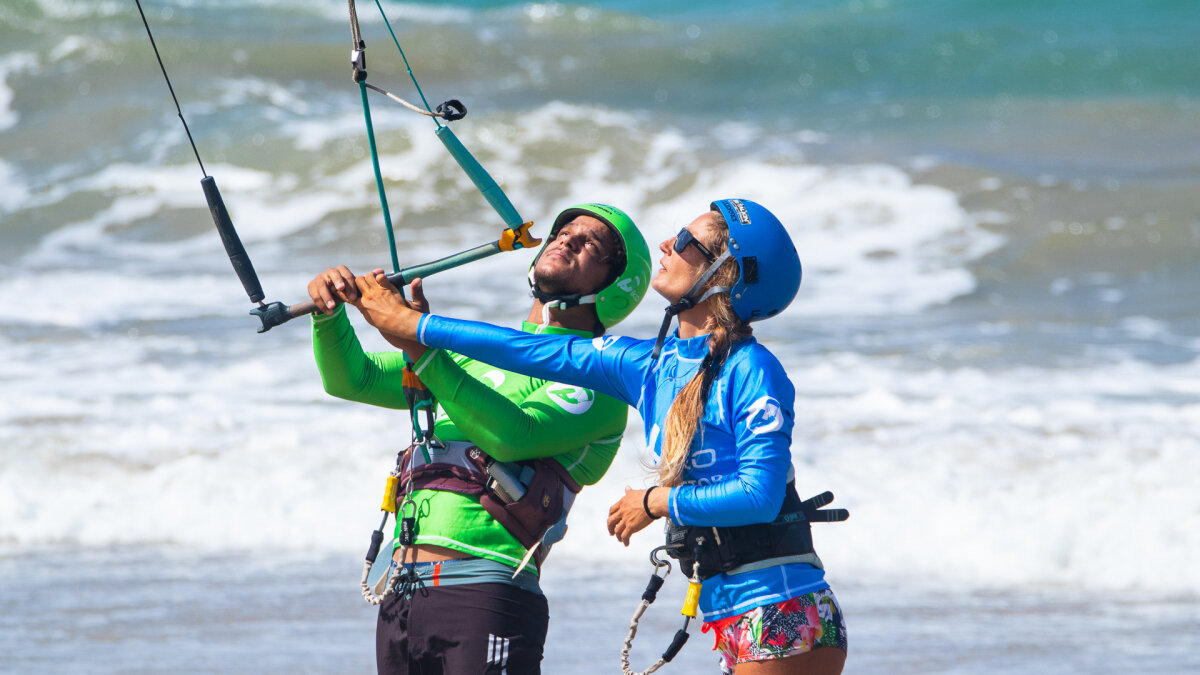
Why should the Instructor not touch the bar of the student?
If they have really poor steering control then you can use the elbow technique and help them as much as they need at the start and decrease how much you have to help as the lesson progresses. They need to become independent. Again it’s really important here to use short lines.
Of course if you’re teaching and you see your student is distracted by something else happening around and doesn’t watch the kite but pulls on the bar then you can help to correct them to avoid any accidents.
If my student is struggling to put the board on their feet, can I help them to put on the board?
It’s always okay to help your student but if you have to help because they are really struggling then it is likely that they are tired and it is best to stop the lesson and continue at another time.
The goal of the lesson is to become independent so always helping the student with their board won’t help them to reach this goal.
There are people that struggle to put on the board for various reasons, but even they need to learn how they can put on their board by themselves. You can discover a way for them to be able to do this during the lesson, for example:
-
You can land the kite in the water on the side of the wind window then put on the board and relaunch the kite.
-
You can tell your student to grab a foot strap rather than the handle in the center of the board
-
You can put the board in front of you and try to shuffle your feet in it until they are comfortable and you are ready for your water start.
This may seem more difficult but the students have to learn how to do this by themselves.
Usually people only spend around 9 hours learning how to kite, this means that in this time they need to learn everything to become independent. If you are always doing everything for them then they won’t learn. Of course if you see your student is getting tired then you can always help them. Just remember that they are paying to learn how to practice this sport and they will want to be able to do everything by themselves at the end of their course.
The more you do as an Instructor, the less they learn.
Why do we have to give priority to all other vessels?
Sailing rules state that the one with most maneuverability has to give right of way, in most cases this is us. People who do both wind and kitesurfing might wonder why we kiters have to give way to the windsurfers, in most cases, the most experienced windsurfer will be less maneuverable than even a newly independent kiter.
It's really easy for us to change tack, do a jibe, in most cases it’s even fun so just be nice.
One exception could be when a kiter is surfing a wave, in this case the windsurfer would have to give way because we are less maneuverable.
Use common sense!
Does a kiter riding starboard tack always have priority?
No, this is a general rule for priority however in many situations it doesn’t apply. For example:
-
If you encounter a kiter surfing a wave on port tack then they would still have priority.
-
If you have spot where you enter the water on port tack then you would still have priority because you are entering the water.
-
If you’re starboard and you want to jump but you have someone coming towards you on port tack, then you would still have to wait as you have to have some free space around you.
-
If someone is body-dragging then they have priority because they are less maneuverable.
Overall if you see a rider that is not following the row rules then it’s better to just move away and give them their space rather than almost have or have an accident with them.
Thank you Vincent for clarifying all these different safety issues for us! We wish you all many safe kitesessions.
*Credits to H2O Extreme for the cover photo.
.png)

